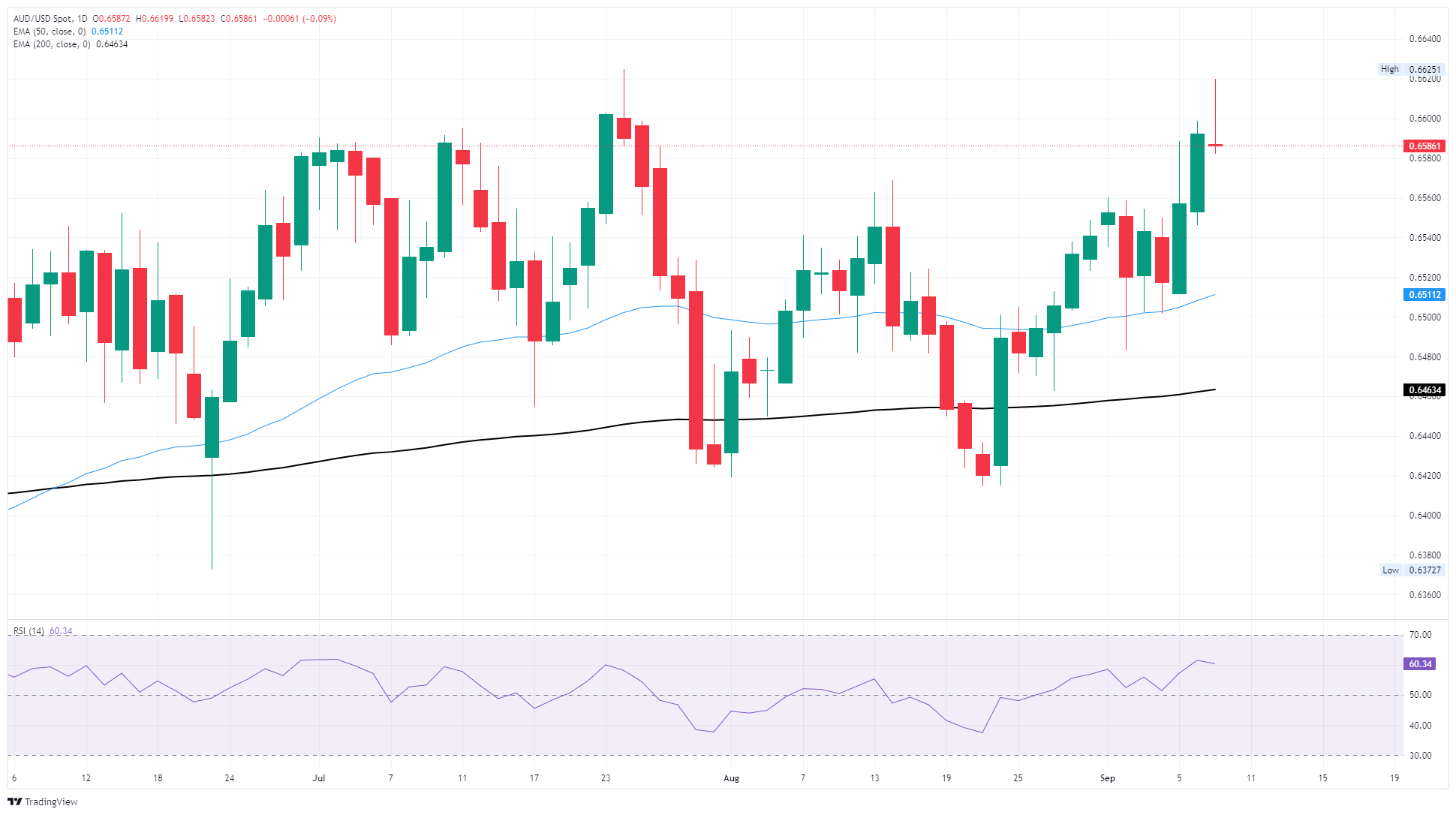AUD/USD grapples with Greenback resurgence
- AUD/USD tested seven-week highs on Tuesday before settling back.
- The US Dollar saw a resurgence after bets of Fed rate cuts kicked higher again.
- US jobs data continues to get revised lower.
AUD/USD briefly toyed with a seven-week high north of 0.6600 before settling back and paring intraday gains. Tuesday saw another sharp downside revision in US jobs data, reigniting market-wide glee for Federal Reserve (Fed) interest rate cuts.
Not all is glimmery on the FX front, however. The recent annual revision of Nonfarm Payrolls (NFP) indicates that the US economy added around 900K fewer jobs than previously anticipated for the period from March 2024 to March 2025. Data analysts should expect further downward revisions to 2025 employment figures, as current revisions do not include the effects of the post-tariff economic changes.
NFP figures have gained notable significance recently, partly due to the Trump administration's attempts to politicize these estimates. However, achieving deeper accuracy is challenging, especially since a survey sample cannot perfectly reflect the economy at a time when the President can enact drastic policy changes with a single decision on a Friday afternoon.
Fed rates still rule the market
According to the CME’s FedWatch Tool, the market now considers a 25 basis point interest rate cut on September 17 as almost certain. Some aggressive rate traders are even pricing in over a 17% chance that the Fed might be pressured, either by economic data or political influences, into a 50 basis point cut next week.
The upcoming US Consumer Price Index (CPI) inflation report, expected this Thursday, is projected to show that inflation remains well above the Fed’s 2% target. This complicates the Fed’s ability to cut interest rates quickly, regardless of whether policy rates are above or below the natural rate of interest, known as r-star.
AUD/USD daily chart

Australian Dollar FAQs
One of the most significant factors for the Australian Dollar (AUD) is the level of interest rates set by the Reserve Bank of Australia (RBA). Because Australia is a resource-rich country another key driver is the price of its biggest export, Iron Ore. The health of the Chinese economy, its largest trading partner, is a factor, as well as inflation in Australia, its growth rate and Trade Balance. Market sentiment – whether investors are taking on more risky assets (risk-on) or seeking safe-havens (risk-off) – is also a factor, with risk-on positive for AUD.
The Reserve Bank of Australia (RBA) influences the Australian Dollar (AUD) by setting the level of interest rates that Australian banks can lend to each other. This influences the level of interest rates in the economy as a whole. The main goal of the RBA is to maintain a stable inflation rate of 2-3% by adjusting interest rates up or down. Relatively high interest rates compared to other major central banks support the AUD, and the opposite for relatively low. The RBA can also use quantitative easing and tightening to influence credit conditions, with the former AUD-negative and the latter AUD-positive.
China is Australia’s largest trading partner so the health of the Chinese economy is a major influence on the value of the Australian Dollar (AUD). When the Chinese economy is doing well it purchases more raw materials, goods and services from Australia, lifting demand for the AUD, and pushing up its value. The opposite is the case when the Chinese economy is not growing as fast as expected. Positive or negative surprises in Chinese growth data, therefore, often have a direct impact on the Australian Dollar and its pairs.
Iron Ore is Australia’s largest export, accounting for $118 billion a year according to data from 2021, with China as its primary destination. The price of Iron Ore, therefore, can be a driver of the Australian Dollar. Generally, if the price of Iron Ore rises, AUD also goes up, as aggregate demand for the currency increases. The opposite is the case if the price of Iron Ore falls. Higher Iron Ore prices also tend to result in a greater likelihood of a positive Trade Balance for Australia, which is also positive of the AUD.
The Trade Balance, which is the difference between what a country earns from its exports versus what it pays for its imports, is another factor that can influence the value of the Australian Dollar. If Australia produces highly sought after exports, then its currency will gain in value purely from the surplus demand created from foreign buyers seeking to purchase its exports versus what it spends to purchase imports. Therefore, a positive net Trade Balance strengthens the AUD, with the opposite effect if the Trade Balance is negative.

